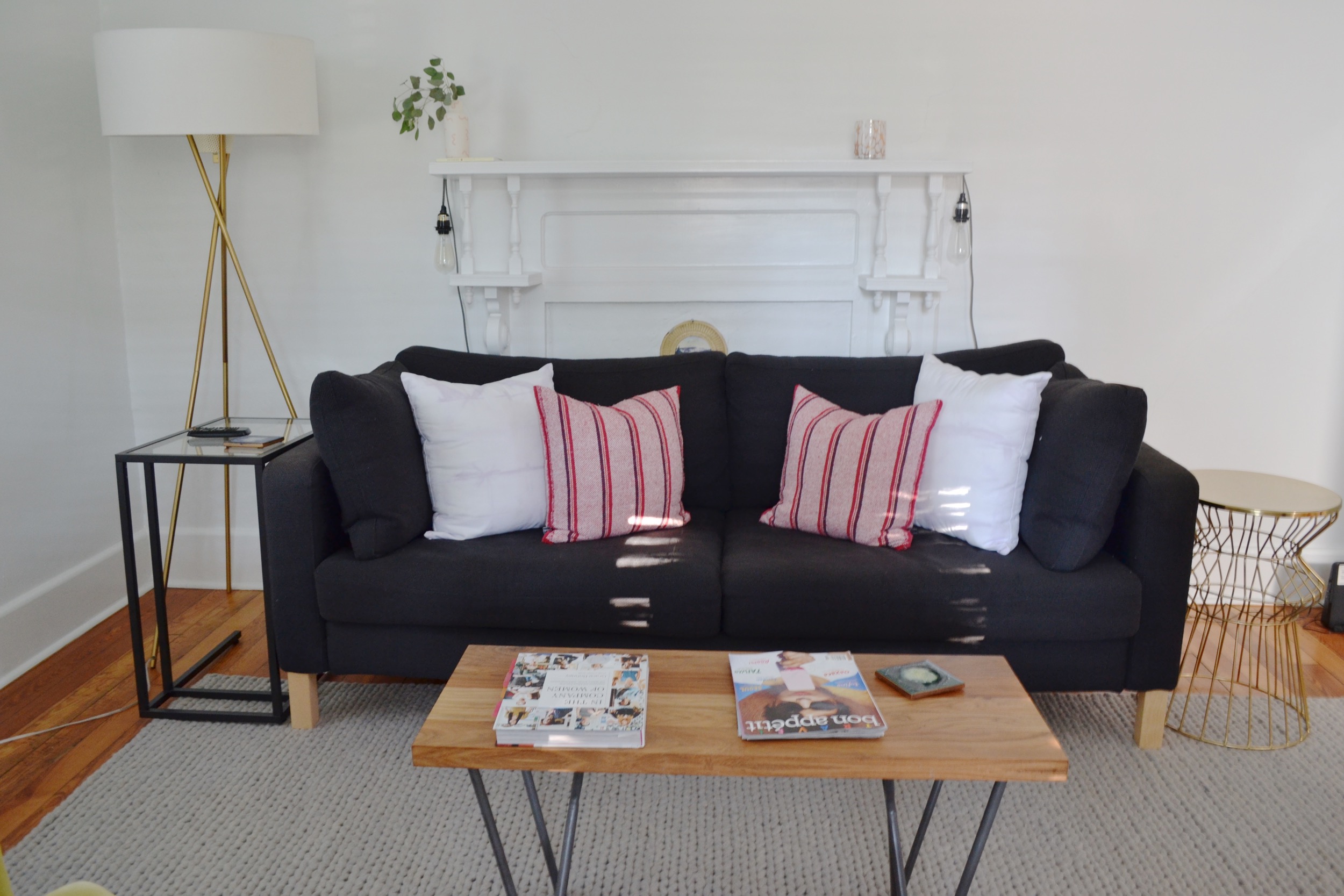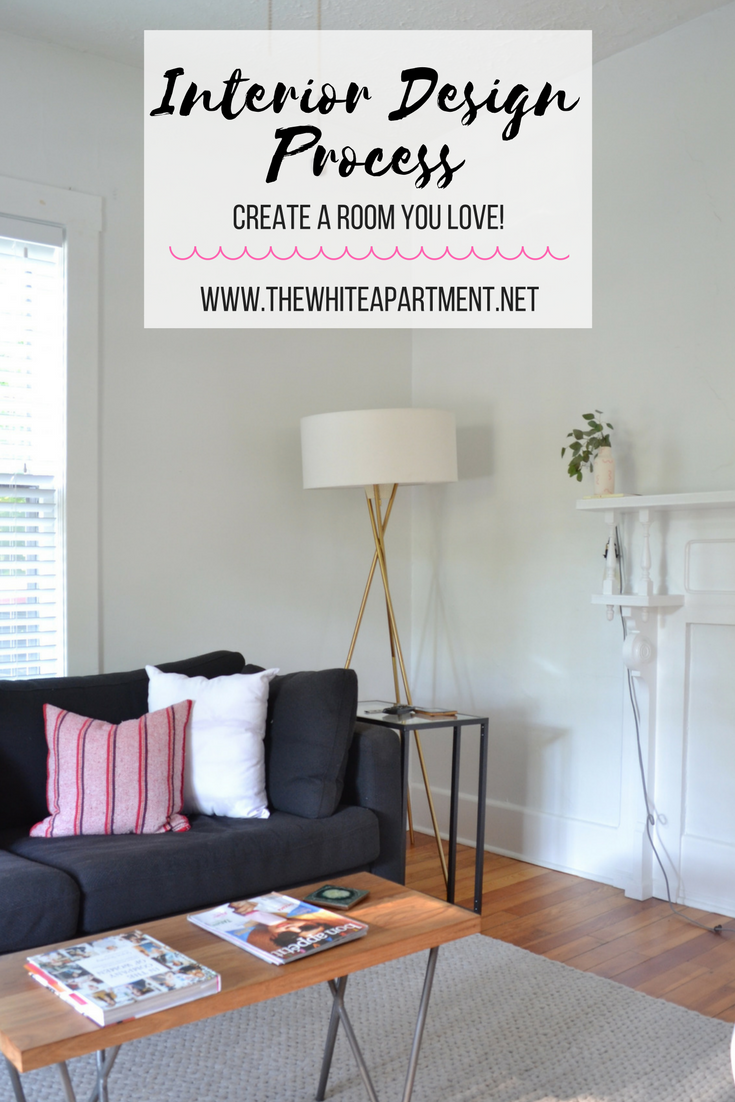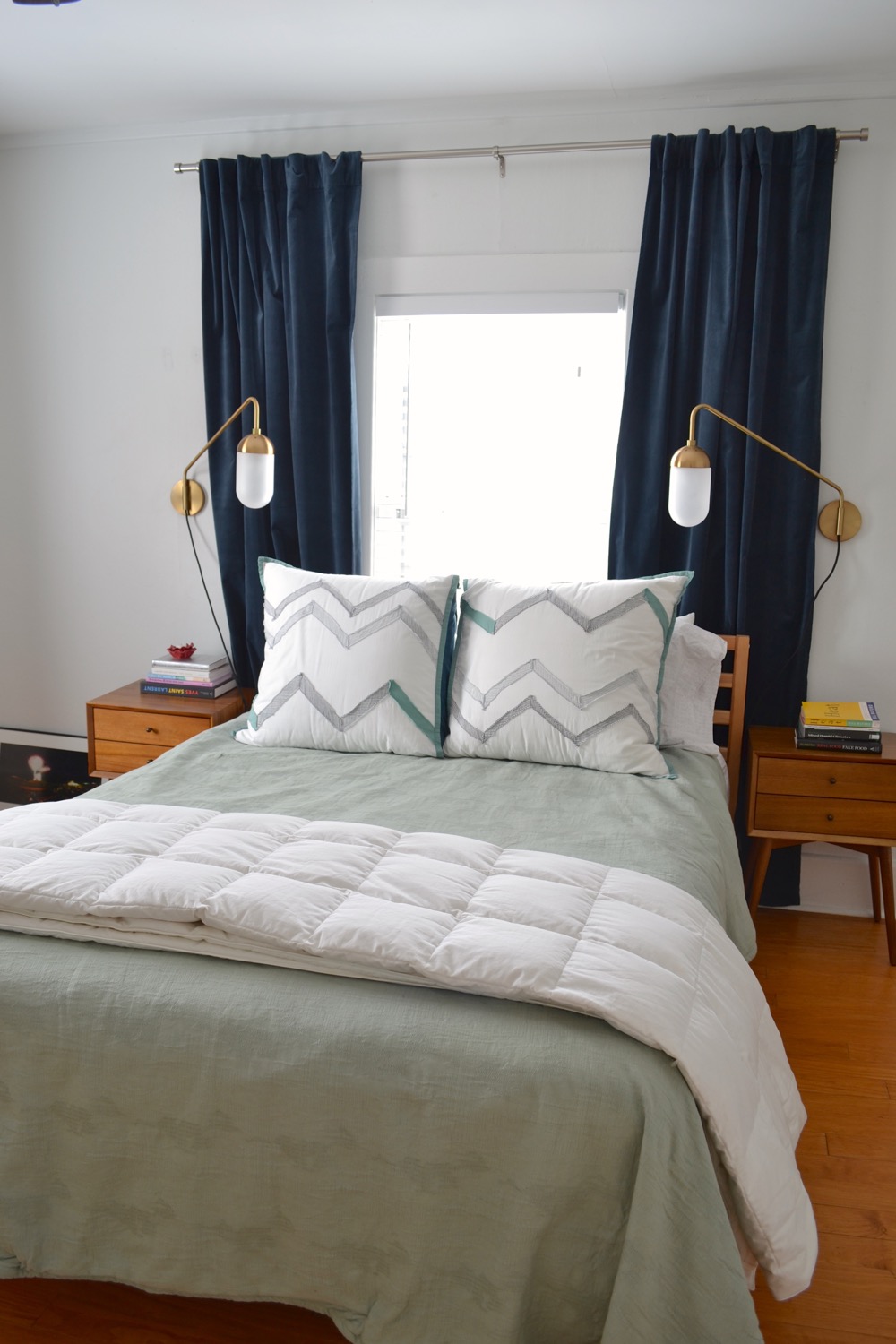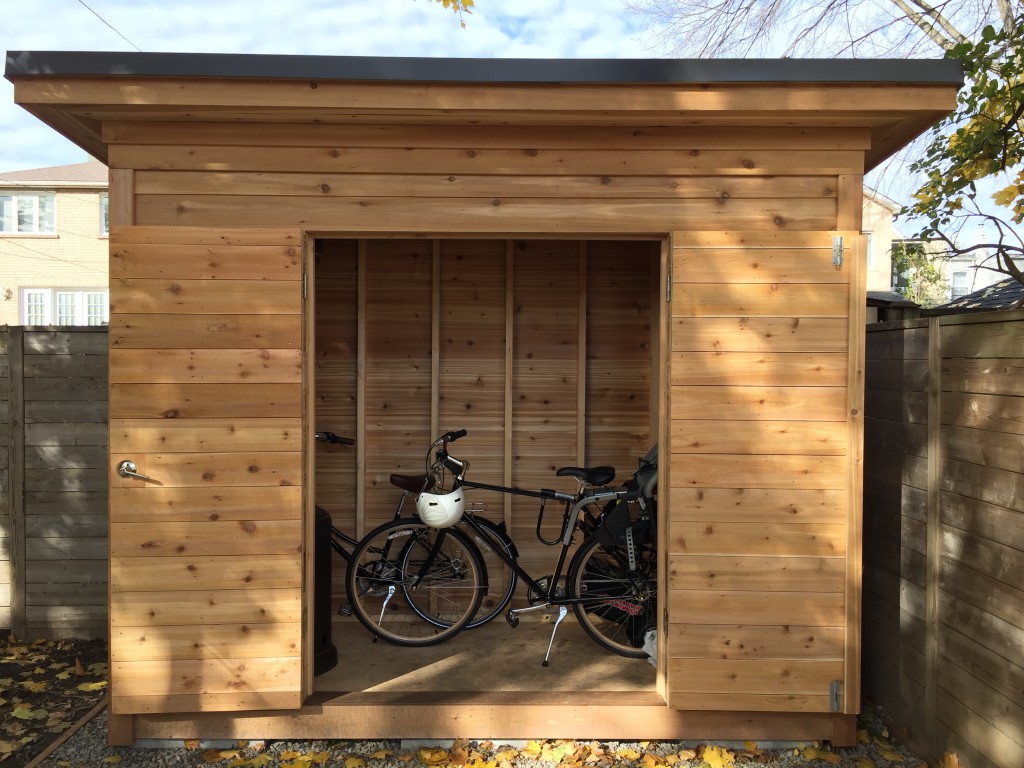Today I’m going to take a step back and talk about my interior design process for a room (and it works for a house too). It’s definitely a big picture look at design and it’s a huge help in getting an end result that I’m happy with. If I really think and work through the design process it creates a solid foundation for my room/house and in turn makes the decorating much easier. To me, when I really devote some time to this process I find that in the end it’s almost like a puzzle. There are particular pieces that fit in particular places and that makes it SO easy for the room to come together in the way you want.
Interior Design Process: Steps to Creating a Room You Love
1. Live with the room – this is the step where you figure out what you want out of the room. You’ve interacted with the room for at least a few weeks, sometimes more. You’ve lived in it and with it in it’s current state and discovered what aspects need to be there for the room to serve it’s purpose. What are the basic needs for the room? For instance, if it’s a bedroom you might want it to be cool, dark, and comfortable. Or if it’s a kitchen you might need something that can stand up to wear and tear, has lots of counter space, and is very easy to navigate. Think about all the logistical, tangible aspects of your room.
2. Think about how you want the room to feel – this is similar to the step above, but it’s emotional. After you’ve used the room and understand it’s logistical needs it’s time to think about how you want the room to feel. What do you want people to experience when they’re in it. What do you want to experience? Going back to the bedroom you probably want it to feel relaxing, intimate and cozy. And for the kitchen example you may want it to feel inviting so people feel welcome to hang out there all day.
3. Work with the staples you already own – in this step I like to work with all things I already have for a particular room. Sometimes that’s really clear – you know your bed goes in your bedroom or the couch in the living room. But, sometimes other pieces of furniture can transition easily from room to room and work well in many situations. Start with the pieces that must be in the room both because they have to be in there, and also because they’re usually the biggest. Arrange, re-arrange, re-arrange again, and then again. Do it as many times as you possibly can. Try out every arrangement you can think of. This step will take a while because you’ll also want to live with each layout long enough to get a feel for it. Xan and I are in this step for our living room. We’ve figured out 3 possible layouts (that’s not many considering in our last living room probably had 10) and we’ve lived with each one for at least a week. Currently we’re deciphering how we feel about the 3rd option. Even though this step takes a lot of time and work don’t skip it. It’s so important to feeling great about the end result. Like I said, our last living room had SO MANY potential options that we spent an insane amount of time rearranging our living room (there were times when I seriously wanted to pull my hair out). But, that’s actually all the more reason to do it. It was so hard because the decision wasn’t clear. And spending all that time figuring it out in the beginning meant that in the end I was confident that was the best layout and I never thought about moving things again.
4. Add in the accent pieces you already own – This is where you try out all those transitional pieces that could work in many places. Again, try as many possibilities as you can think of. ALL the layouts. ALL the combinations. Get creative and think outside the box. You have nothing to lose because everything you’re doing is free. This is another step that will take some time because you need to give yourself enough time with each feasible option to figure out if it’s the one.
5. Assess gaps – by now you’ve figured out which rooms your existing furniture is going in and exactly where in those rooms it will live. And you know the needs of the room and how you want it to feel. Now’s the time to figure out what’s missing. What pieces do you need to fill out the room and achieve the goals you have for it? Be realistic but thorough. You’re creating a bit of a wish list here. And if you’ve recently moved it may be long. That’s okay. The reason you’re making this list is because then you’ll slowly get the things on it as you save up. By knowing exactly what you’re missing you help yourself in two ways. The first is that you’ll be able to search for the perfect pieces everywhere you go. This is especially applicable at flea markets, estate sales, and other places where you pretty much have one shot. You’ll know exactly what you’re looking for when you’re at those places in case you come across a gem. The second is that you’ll be able to build the space around those things and not interfere with the end result because you’re accounting for the missing elements.
6. Decorate – this is always the very last step, especially for anything you have to hang on the wall. This is because if you don’t know where all of your furniture is going to go then it’s almost impossible to figure out where to hang things. If you do you’ll probably end up moving them. And personally I HATE hanging things, so I’d much rather wait, just do it once and have it be right than do it sooner just to get something up. But, once you’ve figured out where everything goes or will go when you’ve got it in the future it’s so much easier to decide on where to hang art and where to add decorations. Like I said before, it’s like a puzzle. You know how the closer you get to finishing a puzzle the easier it is to figure out where the pieces go? Yeah, well same thing here. By process of elimination there will only be so many places things can go and then it will become obvious based on the shape, size, or how much you like it.
And that’s my interior design process for a room! You can do it for one room or the whole house. Since we just moved we’re doing it for the whole house. The space is so different than where we were before so I’m starting fresh and resisting the urge to do anything just because that’s how it was before. I’m really forcing myself to look at everything and every space like it’s new. So, for a lot of the rooms we’ve figured out where the staples will go but are still working on a couple. And we’re still swapping out accent pieces all over the house to figure out the best spot for them. Like I said, this whole process can take a while, but compared to how long you’ll be in the space it’s so incredibly worth it!


















